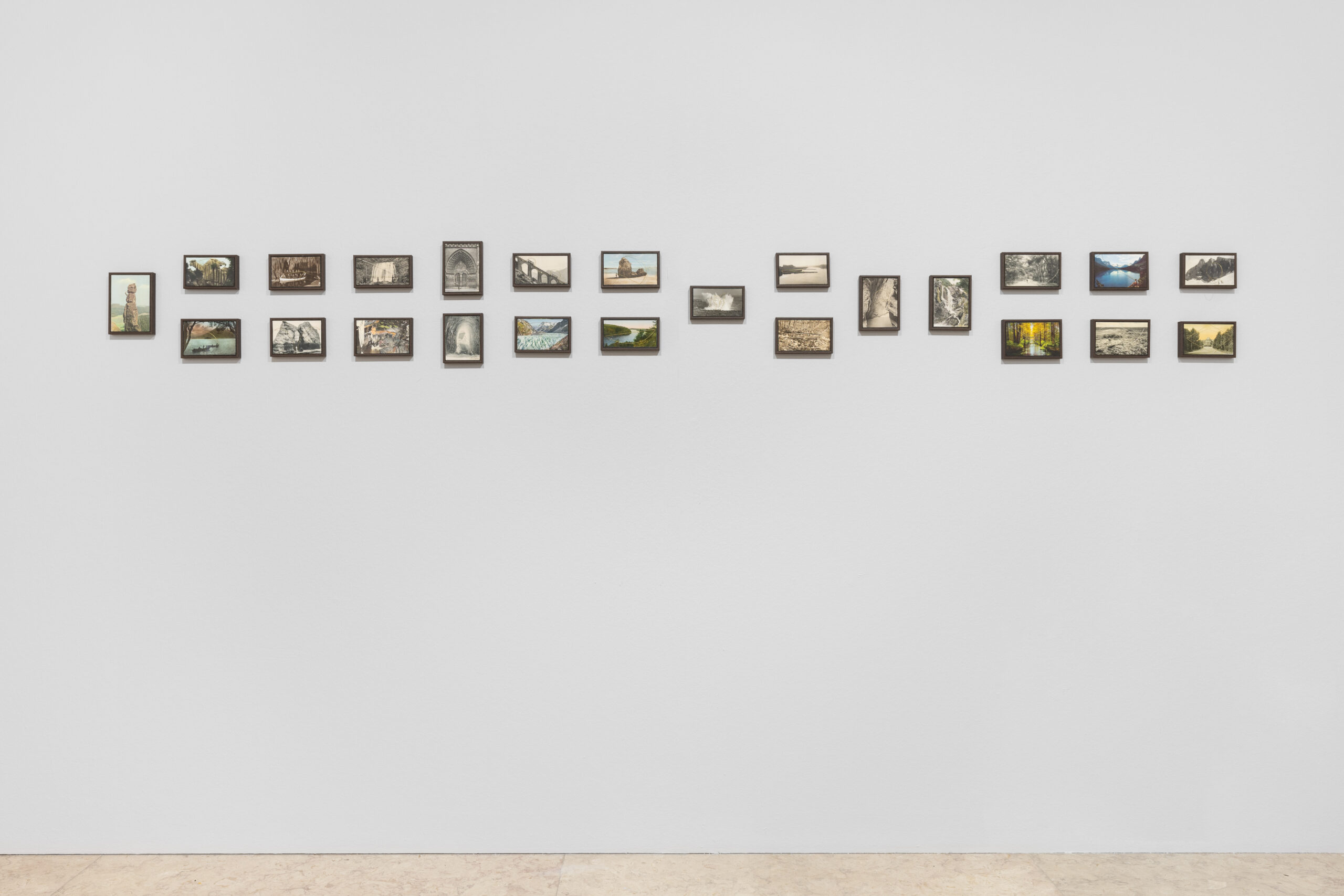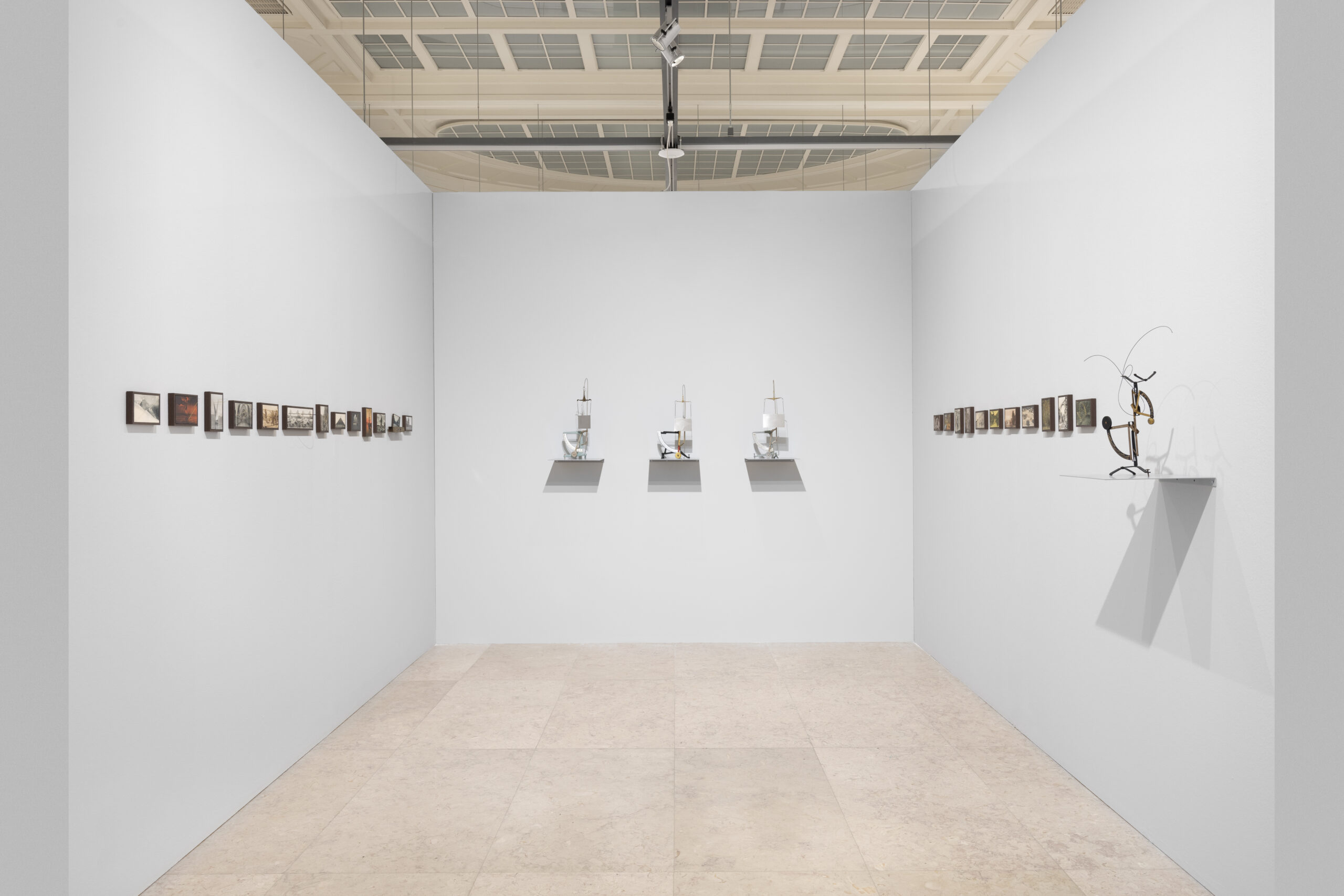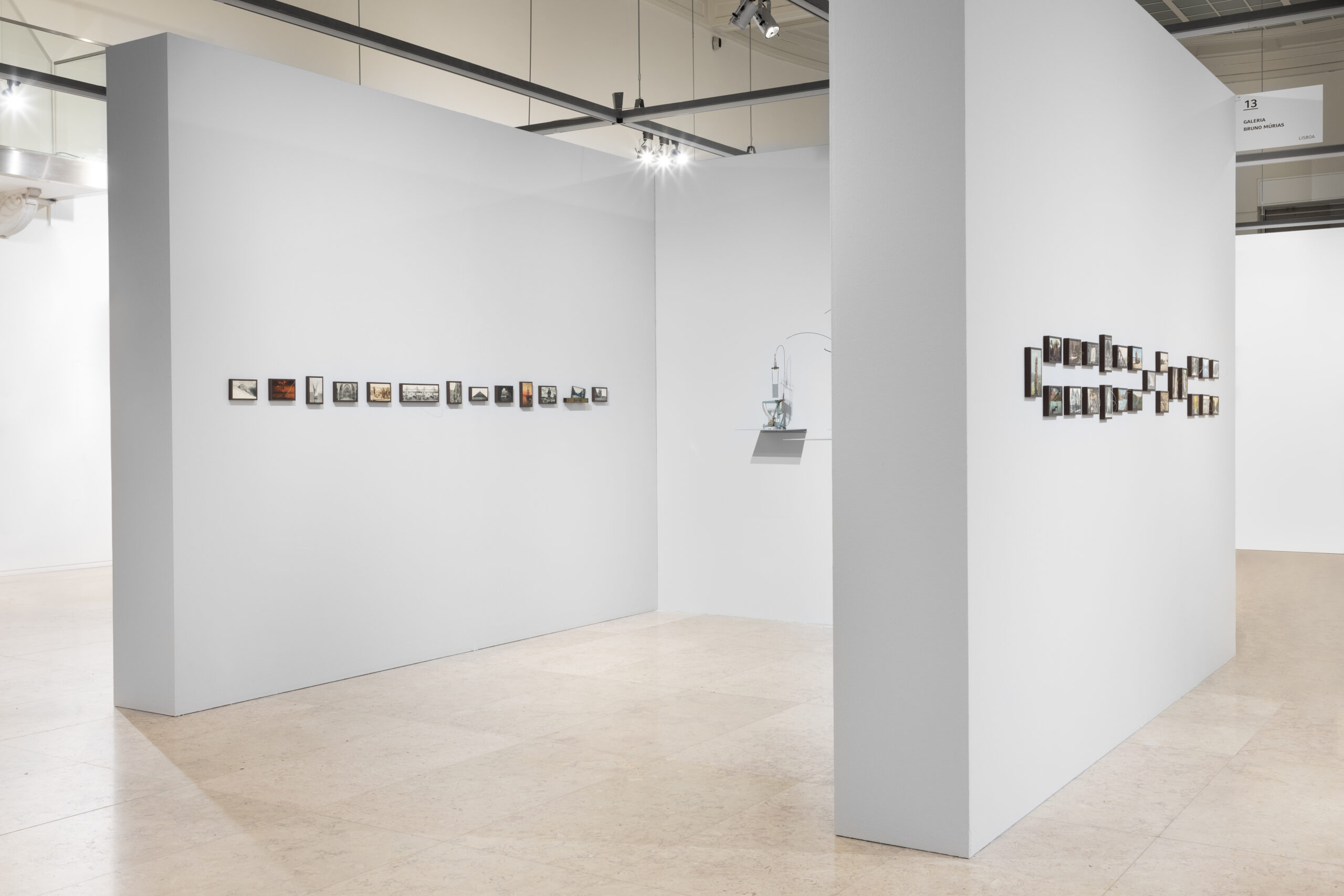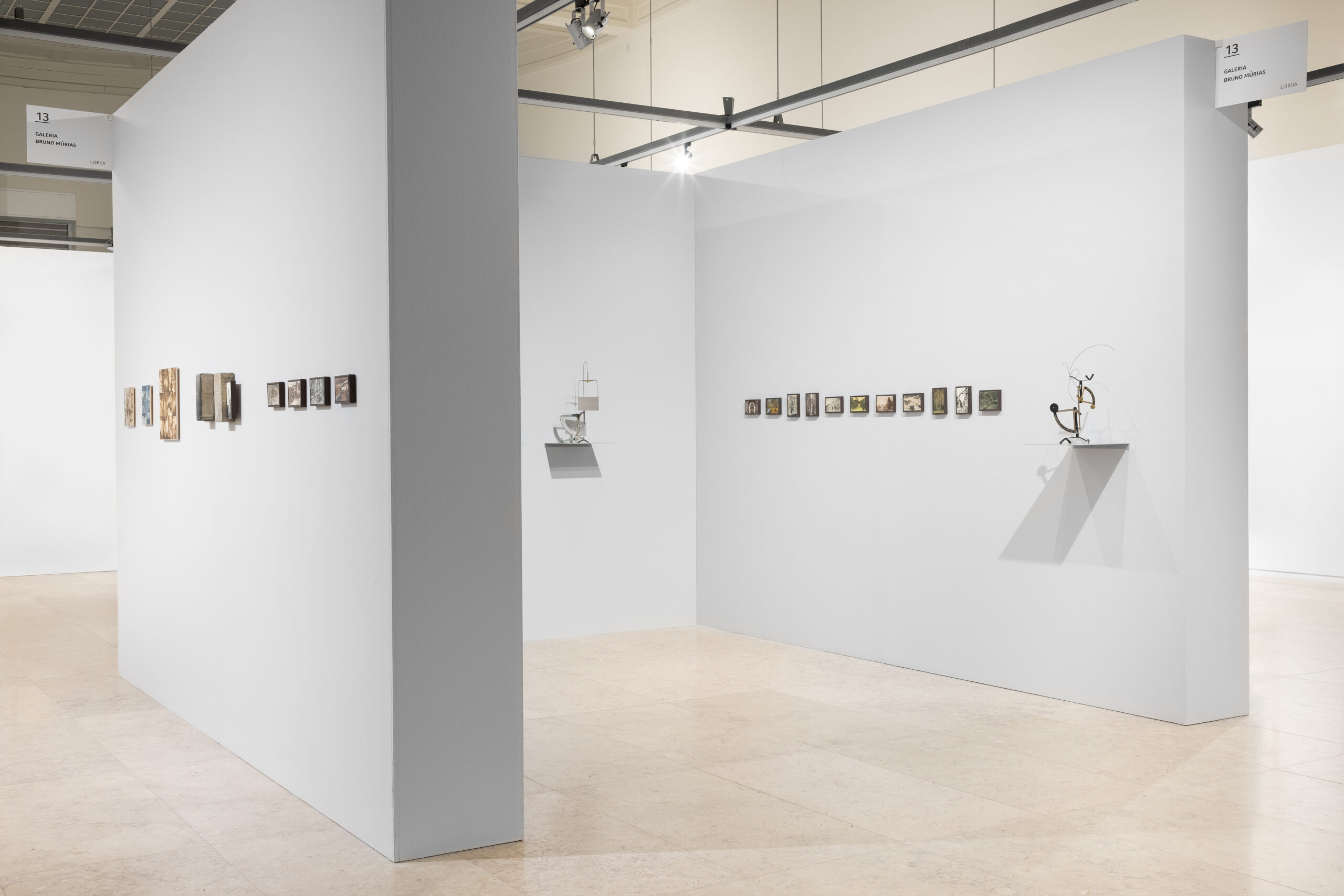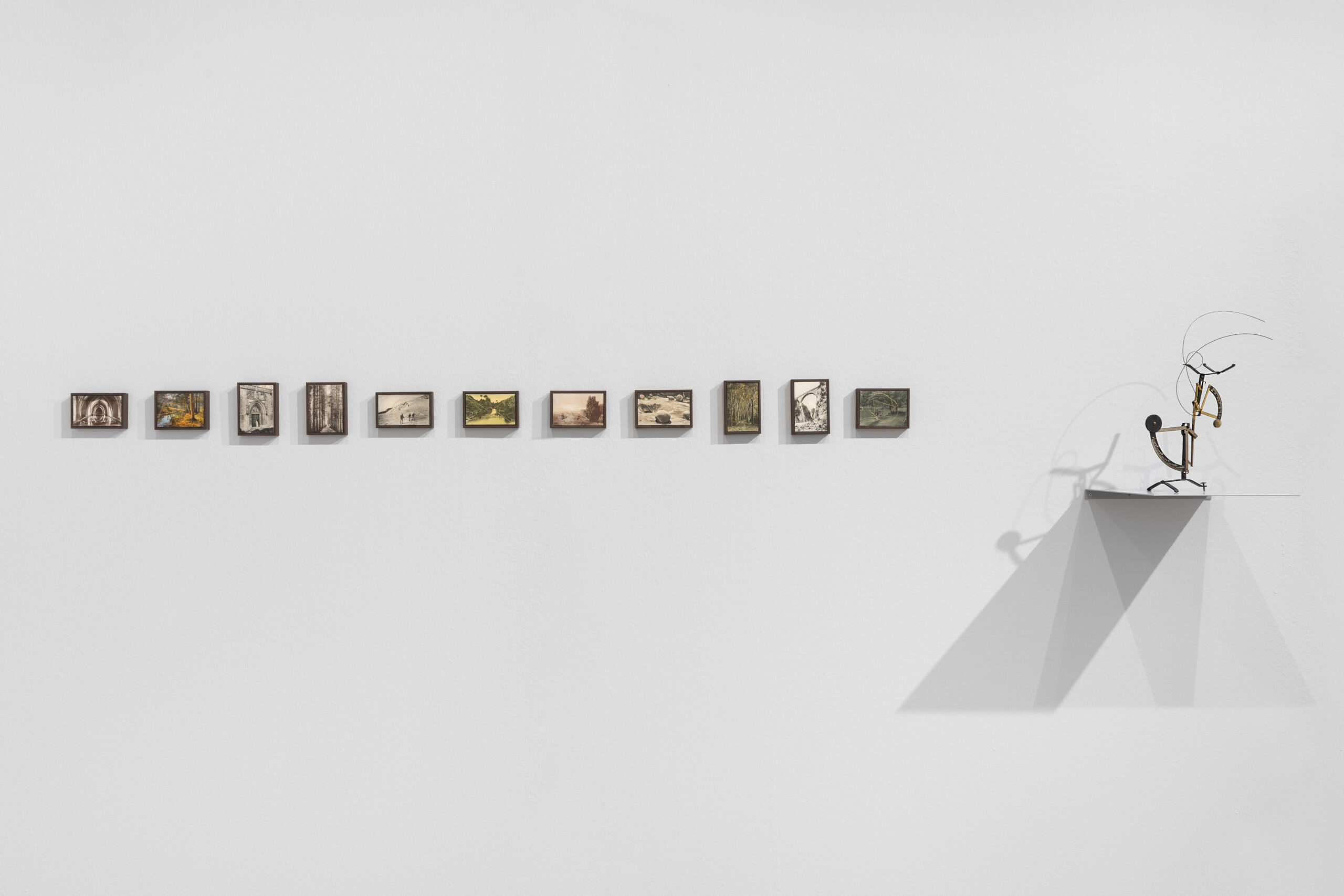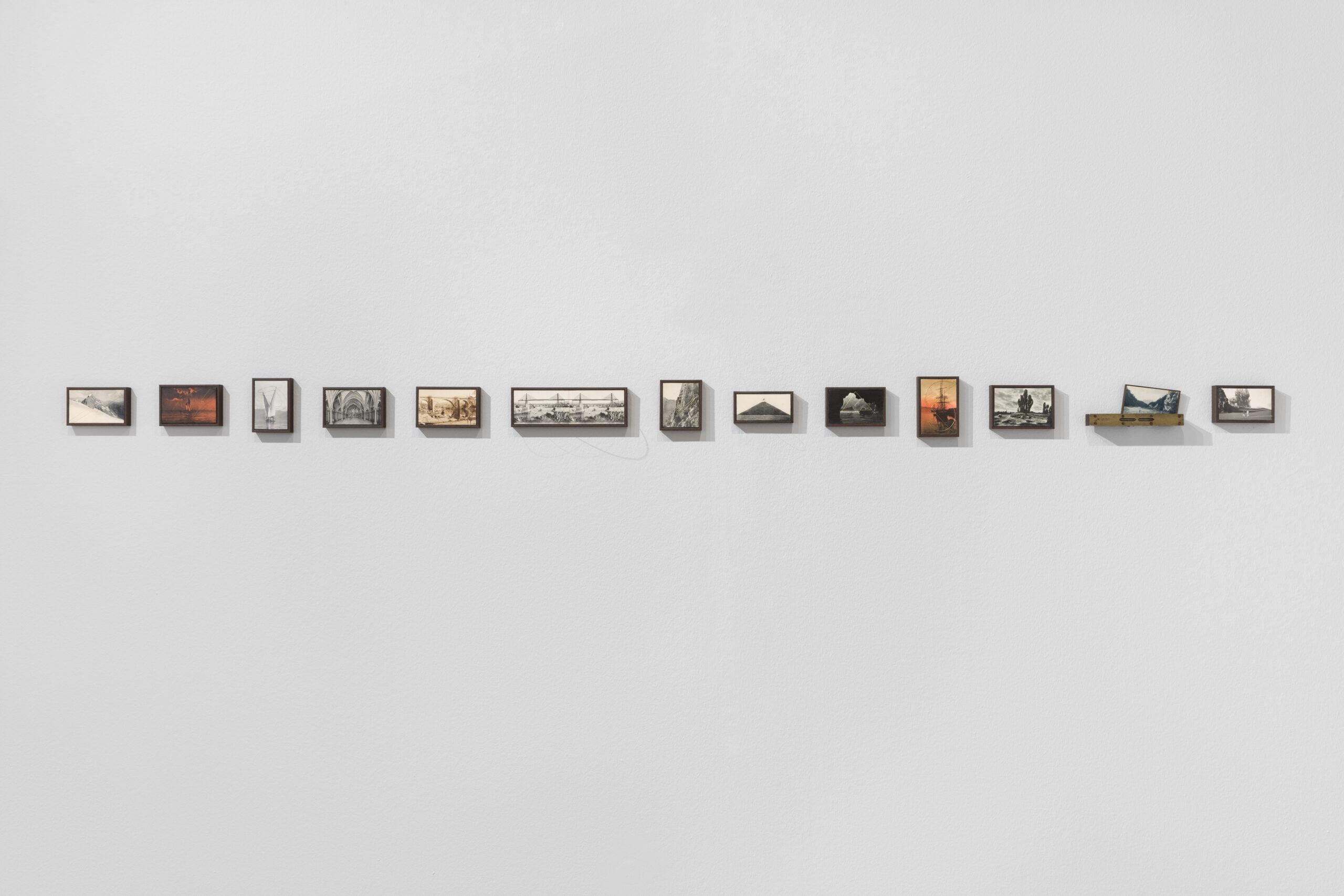Solo Project at Drawing Room Art Fair. Galeria Bruno Múrias. 2024
Fios Condutores / Connecting Wires. (ENG)
Solo project at Drawing Now Art Fair at Sociedade Nacional de Belas Artes de Lisboa. 2023
Suppose an image. A path in the woods surrounded by tall trees, perhaps pines. Further along a very small gure walks along it, almost disappearing. His arms are joined behind his torso, close to his lower back. His legs spread out amidst the play of shadows caused by the irregular light beams coming through the high branches. The image that follows him is the same as the one before him. Over the spectre of his head, a straight line reaches or leaves him, evading itself from the forest and its original two-dimensionality. In the same way, the sails of a boat are connected to the tension of the wind that blows them and makes the object move, or the gravitational line of a climber is extended from the altitude at which he stands down to the ground from which he began his escalation.
Rui Calçada Bastos (Lisbon, 1971) proposes images that unfold beyond the image thesemselves, drawings that materialise into sculptures and pocket conversations. Like amulets that are kept or shared as a gesture of protection and offering, they carry within them portals to alternative environments. In them, the apparently invisible movements of gravity and the soul seem to reveal themselves through the silver and brass drawings. Sometimes resembling iconographic images – where the possibility of the existence of mystical powers and fantastic breaches to other spaces is magnetised – Connecting Wires are travellers and travels in a spectral, layered time. Lonely characters seem absent from being observed, passangers of a horizontal hourglass. They wander and rest among mountains, churches, caves and deserted locations, many of those referring to places where the tradition of legend and metaphysical transformation is no stranger to them.
The artist creates atmospheres of strangeness and enchantment, where different dimensions touch and expand – both formally and spiritually. Perhaps this plastic clairvoyance – of the line that gives body to the gesture, of the gesture that extends the body and of the body that transforms itself – is evidence of the inde nability of the works of memory perception. The postcard as the correspondence of a moment, the scales as the receiver of a miscalibrated message, and the metallic trace as the remain of a secret, gesture or word remembered in absence. In a way, it is as if the dimensions of temporality and spatiality separate from each other and implode momentarily, making it possible to walk through the images of this hypothetical hiatus that rests hidden in the aperception of a whisper or a phantom limb – images of energy, matter and light.
Eva Mendes
_______________________________________________________________________________________________________________________________________________________________________
Fios Condutores / Connecting Wires. (PT)
Suponhamos uma imagem. Um caminho no bosque delimitado por árvores altas, talvez pinheiros. Mais avançada e muito pequena, uma gura percorre-o, quase a desaparecer. Os seus braços unem-se atrás do torso, junto à lombar. As suas pernas difundem-se no jogo de sombras provocado pelas entradas irregulares de feixes de luz nos ramos elevados. A imagem que o sucede é igual à que o antevê. Sobre o espectro da sua cabeça, uma linha reta chega a si ou de si sai, evadindo-se do bosque e da sua bidimensionalidade original. Do mesmo modo, ligam-se as velas de um barco perante a tensão do vento que as sopra e que faz o objeto mover-se, ou prolonga-se a linha gravitacional de um alpinista, desde a altitude a que se encontra até ao solo de onde iniciou a sua escalada.
Rui Calçada Bastos (Lisboa, 1971) propõe imagens que se desdobram para além da imagem, desenhos que se materializam em esculturas e conversas de bolso. Como amuletos que se guardam ou que se partilham em gesto de proteção e oferenda, carregam em si portais para ambientes alternativos. Neles, os movimentos aparentemente invisíveis da gravidade e da alma parecem revelar-se através dos desenhos a prata e latão. Aproximando-se, por vezes, a imagens iconográ cas – onde a possibilidade da existência de poderes místicos e brechas fantásticas para outros espaços se magnetiza – Connecting Wires são viajantes e viagens num tempo espectral, de camadas. Personagens solitárias parecem ausentes do facto de serem observadas, tripulantes de uma ampulheta horizontal. Deambulam e repousam por entre montanhas, igrejas, grutas e espaços desertos, muitos deles referentes a lugares onde a tradição da lenda e da transformação metafísica não lhes é estranha.
O artista cerze atmosferas de estranheza e encanto, onde as diferentes dimensões se tocam e expandem – tanto a nível formal como espiritual. Talvez esta clarividência plástica – da linha que dá corpo ao gesto, do gesto que estende o corpo e do corpo que se transforma – seja evidência da inde nibilidade dos trabalhos da perceção da memória. O postal como correspondência de um momento, a balança como recetora dessa mensagem descalibrada, e o rastro metálico como vestígio de um segredo, gesto ou palavra relembrados na ausência. De certo modo, é como se os planos da temporalidade e espacialidade se separassem e implodissem momentaneamente, tornando possível o caminhar pelas imagens desse hiato hipotético que sossega escondido na aperceção de um sopro ou sensação fantasmas – imagens de energia, matéria e luz.
Eva Mendes
